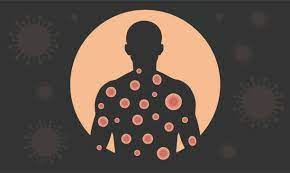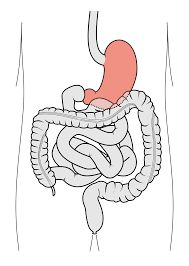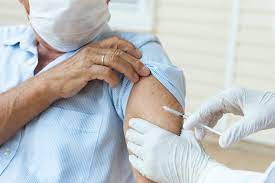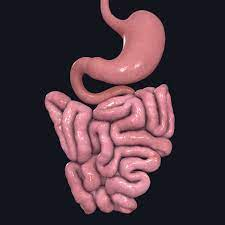Is Monkeypox the New Plague? Effects and Symptoms to Know
- Leandra Cardenas

- Jul 21, 2022
- 4 min read
Recently, two people in the Democratic Republic of Congo died from what health officials are calling Monkeypox. The disease, which has long been thought to only exist in monkeys, spreads through human-to-human contact and can result in fever, vomiting, and even death if not treated quickly.
What is Monkeypox?
Monkeypox is a rare viral infection that is similar to smallpox. It is found mostly in Central and West Africa. The monkeypox virus is spread to people from contact with infected animals, such as monkeys, rats, squirrels, and African giant pouched rats. It can also be spread from person to person through close contact, such as touching or sharing bedding or clothing with an infected person. The Monkeypox virus can cause a serious illness in people of all ages, but is most often deadly in children under the age of five. The symptoms of Monkeypox include fever, headache, muscle aches, backache, swollen lymph nodes, chills, and rashes. The rashes usually start on the face and then spread to other parts of the body. They may blister and become scabs before disappearing after about six weeks. The most severe form of the disease causes swelling in internal organs, pneumonia, and brain inflammation. If you have been exposed to someone who has Monkeypox, you should immediately clean your skin so it does not come into contact with any blisters; avoid using personal items (such as soap) that might have been used by someone who has Monkeypox; wash clothes so they do not come into contact with any blisters; wash hands thoroughly after cleaning any blisters or clothes; keep your distance from anyone who has signs of having the disease; and stay home until at least three weeks after you recover from your symptoms if you were exposed to someone who had signs of having this disease.

What Happens if You Get Infected?
Monkeypox is a rare viral infection that typically causes a fever and rash. In some cases, it can lead to more serious complications like pneumonia or even death. The good news is that Monkeypox is not as contagious as other diseases like the flu or measles. And there are treatments available to help people recover. Unfortunately, if you don't seek treatment for Monkeypox early on, it could be very dangerous. With this in mind, if you have any of these symptoms (below), it's best to contact your doctor immediately.
Whatshould I do if I get infected: For most people with healthy immune systems, getting infected with Monkeypox will not be fatal. However, those who are immunocompromised and have low immunity levels from HIV/AIDS or diabetes mellitus (a chronic disease) may experience severe illness or even death. Treatment includes administering acetaminophen (Tylenol) or ibuprofen (Advil) for pain relief and reducing fever; antibiotics may also be necessary in severe cases of pneumonia caused by the virus. Patients may also need to take blood pressure medication and undergo chemotherapy. It’s crucial that anyone with an active case of Monkeypox receives immediate medical attention before the virus spreads to others through droplets or aerosols. Children under five years old should receive at least one dose of acyclovir (Zovirax) if they’ve been exposed to someone with Monkeypox—the sooner they start taking it, the better chance they have at fighting off the infection.
Symptoms of the Virus
Monkeypox is a rare viral infection that causes a rash and fever. It is similar to smallpox, but usually less severe. The Monkeypox virus is found in animals, such as monkeys, rats, and squirrels. It can be passed to humans through contact with an infected animal or person. The virus is spread through the air, contact with contaminated objects, or contact with infected body fluids. The incubation period (the time from exposure to symptoms) is usually 7-14 days but can be up to 21 days. Some people who get sick will have high fever, chills, headache, swollen lymph nodes, backache, muscle aches, dry cough and sore throat. Less common symptoms include skin lesions on the hands and feet which begin as flat red spots then become raised bumps filled with fluid. The bumps may blister before they start to scab over when they heal. Some people also experience nausea or vomiting; there are reports of diarrhea as well.
The symptoms of Monkeypox are generally milder than those of smallpox so most people recover without treatment; there are no reports of death among those who contracted the disease after being vaccinated against it. There is no specific treatment for Monkeypox; doctors recommend bed rest while patients wait for their immune system to fight off the virus. Doctors do not know how long it takes for someone who has been exposed to the virus to develop symptoms, but current research indicates that it could take between one and three weeks. Those at risk should avoid touching any animal that could be carrying the virus.
How Does it Spread
Monkeypox is a virus that is spread through contact with an infected animal, usually a monkey or ape. It can also be spread through contact with infected material, such as bedding or clothing. The virus can also be spread from person to person through close contact, such as touching or sharing food. Symptoms of Monkeypox include fever, headache, muscle aches, fatigue, and a rash that begins on the face and spreads to the rest of the body. The rash usually starts as small red bumps that turn into blisters. Monkeypox is serious and can be fatal in some cases, but it is not as deadly as other viruses in the same family, such as Ebola. There is no specific treatment for Monkeypox, but symptoms can be treated with supportive care. People who are sick should stay home from work or school and avoid contact with others until they have been free of fever for at least three days.
One way to prevent contracting Monkeypox is by avoiding any contact with wild animals like monkeys, apes, squirrels, raccoons, and bats. If you do come into contact with one of these animals, wash your hands thoroughly afterward with soap and water or use hand sanitizer. You should also make sure to clean and disinfect anything that came into contact with the animal's saliva or urine, including clothes, shoes, blankets, dishes, countertops, pets' toys and cages. You may also want to wear gloves when handling anything in the area where the animal was.




Comments